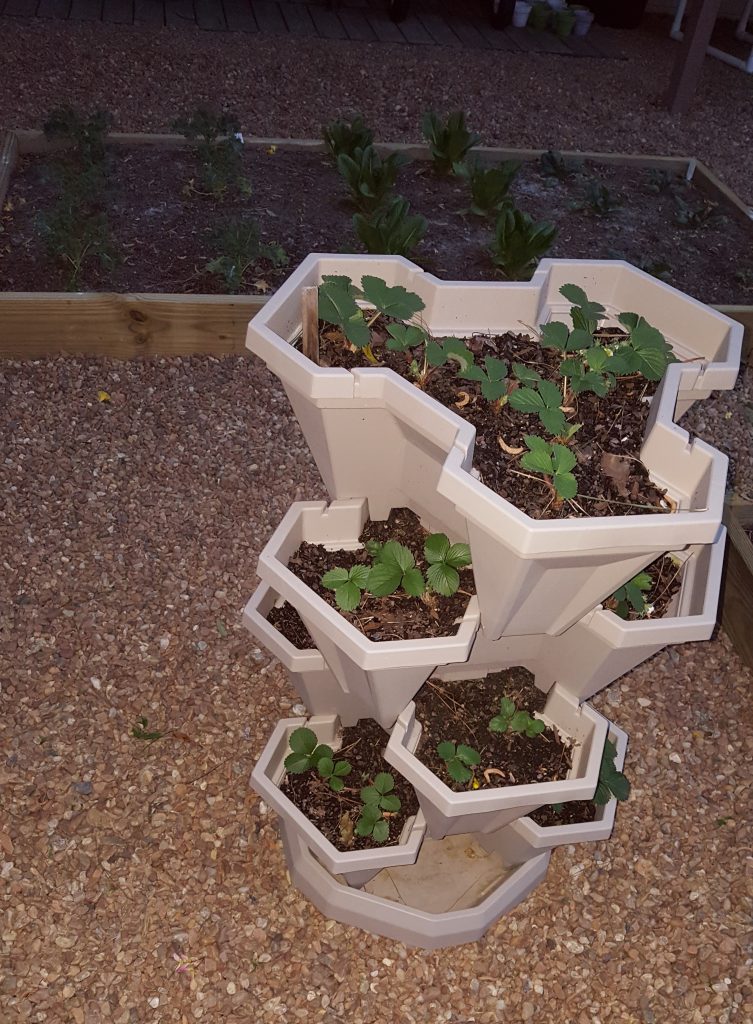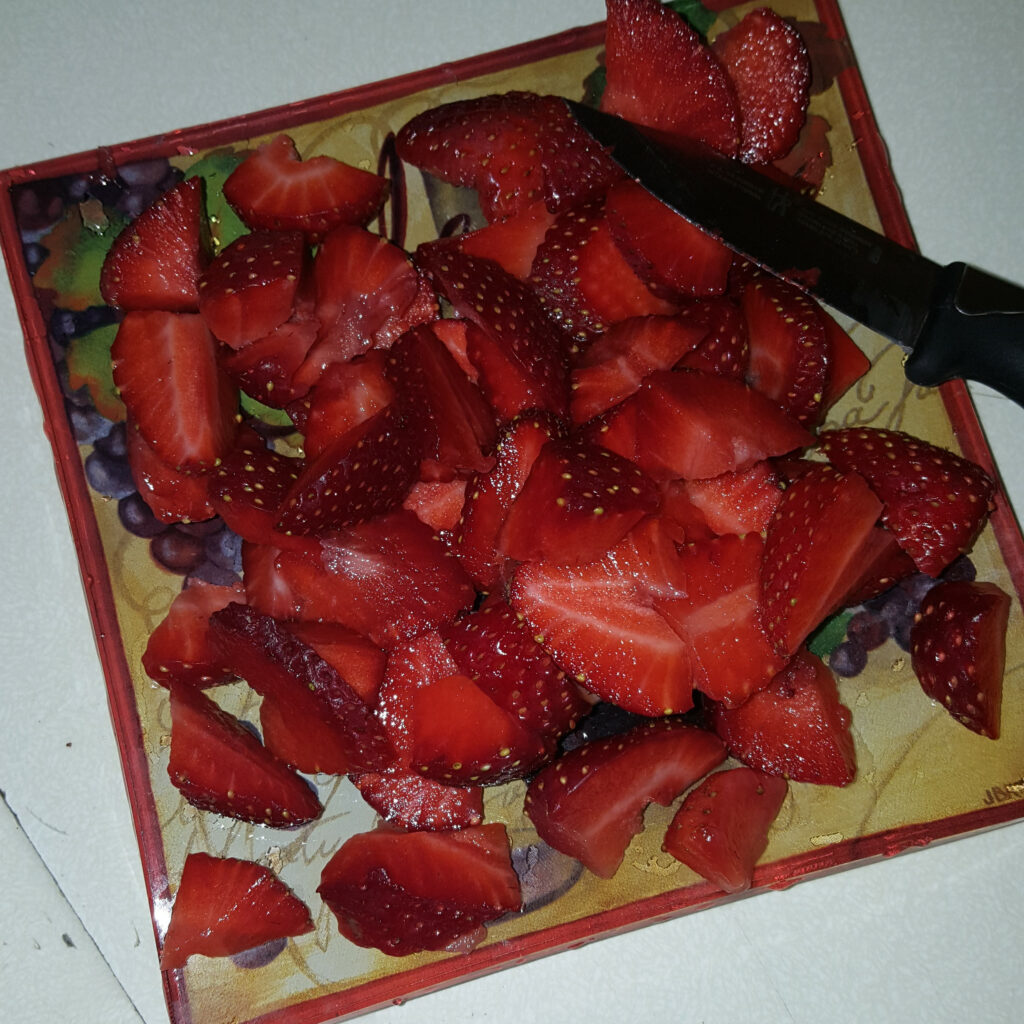Grow strawberries today in your yard and reap the sweet rewards of these tasty little fruits all season long!
Strawberries are famous for home gardens with their sweet flavor and versatile nature.
They’re easy to grow and will thrive in almost all soils and climates as long as the location provides for exposure to full sun.
The three most common types of strawberries are:
- June-bearing, which produces a large crop all at once during early summer.
- Ever-bearing bears fruit twice a year, with a smaller crop in late spring/early summer and another in late summer/fall.
- Day-neutral; this plant produces fruit throughout the entire growing season.
When choosing a variety, it’s essential to consider your climate and the amount of space you have.
For example, June-bearing varieties need a longer growing season and won’t produce fruit the first year after planting them. If you live in a short growing season area, choose an ever-bearing or day-neutral variety.
Just before we get to the nitty-gritty of how to successfully grow strawberries, here are the answers to some of the commonly asked questions about strawberry cultivation.
Frequently Asked Questions About How to Grow Strawberries and Care for Your Plants

What month do you plant strawberries?
The best time to plant strawberries is in the spring, after the last frost. You can also plant them from late summer to early fall for a fall crop.
How many strawberries do you get from one plant?
The number of strawberries you’ll get from one plant will depend on the variety.
June-bearing varieties produce approximately one or two quarts of berries per plant, while ever-bearing and day-neutral varieties produce about one quart or more.
How many strawberry plants do I need for a family of 4?
Growing strawberries for a family of four, you’ll need at least eight to ten plants. This number will give you enough berries to enjoy fresh and preserve a few for later.
Do strawberries need to be replanted every year?
No, strawberries do not need to be replanted every year. A single strawberry plant can produce fruit for three to five years with proper care.
However, you may need to replant every few years to ensure a healthy crop.
How long does a strawberry plant live?
A strawberry plant can live for up to three to five years, fruit vigorously during its first and second year, and decline in production after that.
Do potted strawberries come back?
Potted strawberries can come back, but they may not produce as much fruit as they did the first year.
How do you grow strawberries all year?
To grow strawberries all year, consider planting different varieties that ripen at other times.
Alternatively, grow the plants indoors or in a greenhouse, where you can control the temperature and light more efficiently.
How long does it take for a strawberry plant to produce fruit?
It takes three or four weeks for a strawberry plant to produce fruit.
Can you eat first-year strawberries?
First-year strawberries are generally not as sweet as those in subsequent years. However, they’re still safe for consumption.
To discourage fruiting for a larger and more flavorful harvest, consider picking off the blooms in the first year. Thus, the plant directs energy into developing healthy and strong roots and later larger and more luscious fruits in the second year.
How many times a year do strawberries fruit?
In some varieties, strawberries will bear fruit two to three times per year, but this can vary depending on the type of strawberry plant. Before you invest in plants, research the specific variation to determine whether it fruits only once or more per season.
Can strawberries grow indoors?
While it is possible to grow strawberries indoors, they will not produce as much fruit as those grown outdoors. Additionally, indoor strawberry plants will require more care and attention.
Do strawberries need darkness?
Not really. For most strawberry species grown indoors, sixteen to eighteen hours of exposure to light will suffice, leaving room for only six to eight hours of darkness.
How to Grow Strawberries
Now that you know the basics about these juicy red berries, you ask the big questions:
What is the best way to grow strawberry plants? How do you grow strawberries grow for beginners?
Successful cultivation of strawberries begins with site selection and soil preparation.
- The plants crave full sun (six to ten hours a day) and well-drained, sandy loam soils with a pH of 5.5-7.
- Begin working in compost or aged manure into the soil a few months before planting to improve drainage and aeration and boost the soil’s nutrients and moisture retention.
- Consider growing in raised beds or large containers loaded with compost-enriched potting soil for naturally alkaline soils to efficiently manage the soil conditions.
- During planting, set out the plants eighteen inches apart with rows spaced four feet apart—to allow for adequate sprawling room.
- The holes should be broad and deep enough to house the entire root system without curling or bending.
- As you cover back the roots, ensure that the crown rests at ground level; otherwise, it will suffer rot.
- Water thoroughly after planting to help with root establishment.
How do you take care of a strawberry plant?
Strawberry care is all about availing the plant’s needs for water, sunlight, nutrients, and temperature.
Water—particularly moisture—is vital to strawberries considering their shallow roots.
- Do strawberries need a lot of water? How many times do you water strawberries?
Strawberries require lots of water when developing runners and flowers and late in the summer—when they’ve fully matured and are preparing for winter dormancy.
But generally, in normal conditions, about an inch (of water) per square foot each week will suffice.
- Mulch with pine straw, black plastic, or shredded leaves to keep the plant hydrated and suppress weeds. Regular weeding by hand in the early months of planting will also help keep the plant clean.
- Feed with an all-purpose fertilizer for solid growth and excellent fruit production.
- After fruiting, most strawberry varieties produce numerous runners with daughter plants at the tip.
Remove most of the runner plants to encourage more fruiting.
Do strawberries need a trellis to grow?
A trellis is not required for strawberry plants, but it can help support the plant and keep the fruit off of the ground.
Should I cut my strawberry plants back for winter?
In most cases, strawberry plants do not need to be cut back for winter. However, if the plants are in pots, they may need to be pruned to prevent them from getting too large.
How do you care for a potted strawberry plant?
A little goes a long way in potted strawberry plant care!
- Make sure to position the pot in a location that provides at least eight to twelve hours of sunlight per day—for maximum flowering and fruiting.
- Water the berries twice a week or whenever the soil (an inch below the surface) feels dry.
Closely monitor the plants’ water needs, especially during prolonged hot, dry weather, considering that soil in containers tends to dry out faster than that on the ground. During this time, you may need to irrigate twice daily.
- Every three or four weeks, offer your strawberries a supplemental feeding with a balanced liquid fertilizer, giving them a bite of the same in the fall—when they begin to form perennating buds within the crown(s).
- Offer winter protection
Now, you may be wondering…
Can strawberry plants survive winter in pots?
The answer is yes.
Although they produce best when left to go dormant during winter, strawberries still benefit from some shelter, especially in colder regions where the roots might freeze.
In such freezing temperatures, even containers might crack if left outside; therefore, consider moving them under a deck or into an unheated garage for protection.
Irrigate only when the soil feels excessively dry, then mulch, leaving the pot in place.
- Strawberries are short-lived perennials, so be sure to replace them every three years when their vigor diminishes, and they begin dying off.
Alternatively, snip the runners and spread them out in the pot(s) to birth new strawberry plants at no extra cost.
Strawberry Harvest and Storage
Harvest only fully ripe (red) berries; pick every three days.
Avoid pulling the berry. Instead, cut it by the stem—to avoid damaging the plant.
Store your unwashed berries for three to five days in the refrigerator or the freezer for up to two months.
How to Grow Strawberries Free of Pests and Diseases
- Strawberries may suffer powdery mildew or gray mold and occasionally be preyed on by slugs, Japanese beetles, and spider mites.
- Ensure the beds stay weed-free and use a gritty mulch to keep off the slugs and bugs.
- For treating beetles, use neem seed oil and pureed garlic to spray the plants.
- On the other hand, Bird netting is excellent for ensuring the birds don’t munch the delicacies before you have a chance to.

The Takeaway: You Can Grow Strawberries in Your Yard and Enjoy the Sweet Benefits
Strawberries are a delicious and relatively easy-to-grow fruit that can be enjoyed fresh or in various recipes.
Although they require some care and attention, the reward of fresh berries is worth the effort. With a bit of patience and maintenance, you can grow strawberries and enjoy them in your garden for years to come.


